Fish
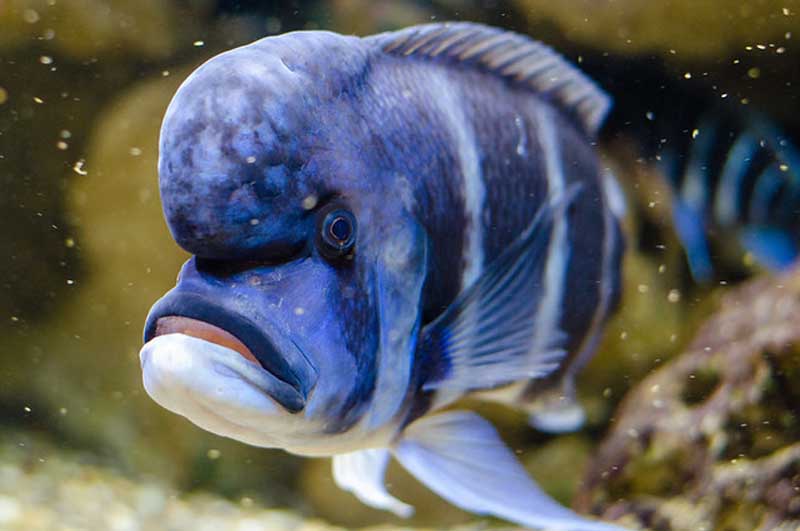
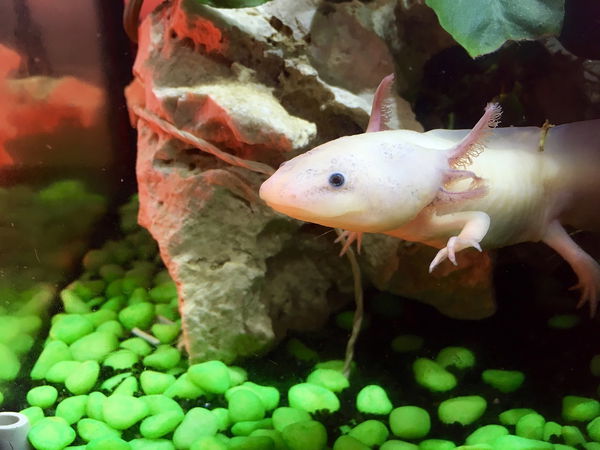
Photo: Pixabay
The axolotl is a type of aquatic salamander endemic to Mexico. It is characterized by its strange and unique appearance, with a wide, round head, external gills, and a long, fluffy tail. Despite its odd appearance, the axolotl is an important animal for medical research, as it is capable of regenerating its limbs and internal organs.
Despite its biological and cultural significance, the axolotl is endangered due to habitat degradation and the introduction of invasive species into the bodies of water where it lives.
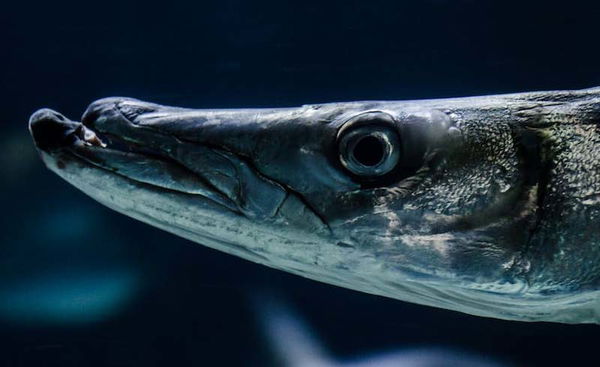
The barracuda is a predatory fish found in warm, tropical waters throughout the world. It is characterized by its long, slender body, sharp teeth, and great speed. It is one of the most feared predators in the ocean, as it can reach speeds of up to 50 miles per hour and attack its prey with precision.
Despite its reputation as a dangerous predator, the barracuda plays an important role in the marine ecosystem, helping to maintain the balance of the food chain and control populations of smaller fish.
However, the barracuda is also a fish that can be dangerous to humans. Sometimes, fishermen and divers can be attacked by mistake if they resemble the barracuda's prey.
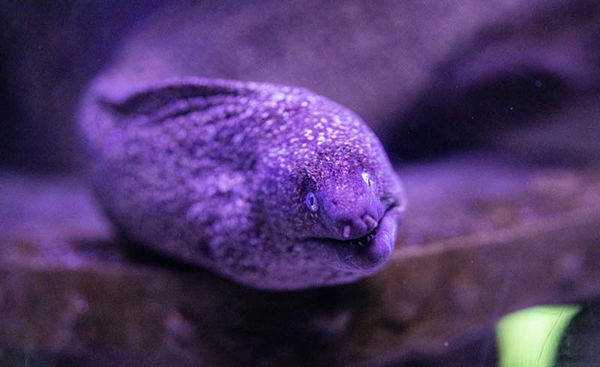
The eel is a long, snake-like fish that inhabits both fresh and saltwater. It is native to Europe, North America, and Asia, and feeds on a variety of foods, including fish, crustaceans, and worms. Eels have a cylindrical body with a small head and prominent, large eyes. Their skin is slippery and covered in mucus, allowing them to move quickly in the water.
Eels are known for their ability to travel great distances in the ocean, from the freshwater rivers where they are born to the oceans where they reproduce. This has led to them being known as "the serpent of the sea". Eels are important in commercial and sport fishing, and are also a popular food in many cultures.
Eels are fascinating animals that have been of interest for centuries. Their ability to survive and thrive in different aquatic habitats makes them special and unique in the natural world.
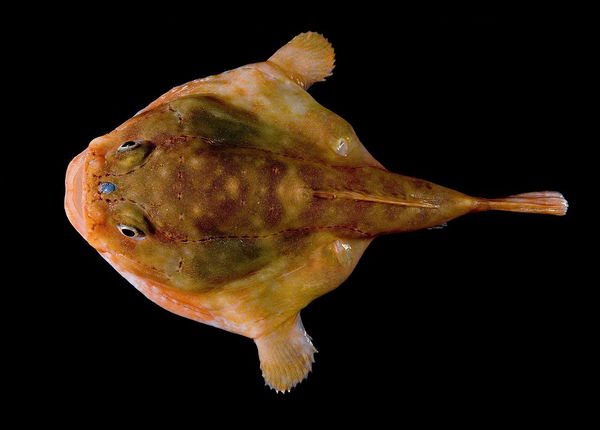
Photo: WikiImages
The frogsapo, also known as the burrowing frog or spade-foot toad, is a small amphibian that belongs to the family Pelobatidae. They are primarily found in North Africa and parts of Europe, including Spain and Portugal. The name "spade-foot" comes from the hard, spade-like protrusion on their hind feet, which they use for digging burrows in sandy or loose soil.
Frogsapos have a flattened, oval-shaped body and can range in color from brown to green, with darker markings on their back. They are primarily nocturnal and feed on insects, spiders, and other small invertebrates. During the day, they remain hidden in their burrows to avoid predators.
Frogsapos breed in temporary pools of water that form after heavy rains. Males call out to attract females and form large choruses that can be heard from a distance. Females lay their eggs in the water, which hatch into tadpoles that undergo metamorphosis into adult frogs within a few weeks.
While not considered endangered, the frogsapo is threatened by habitat loss due to human activity and climate change.

Photo: Mile Ribeiro
The Gulper shark, also known as the "umbrella shark" or "goblin shark", is a deep-sea species of shark that belongs to the family Centrophoridae. This shark has a unique appearance with a long protruding snout and a mouth that can open wide to swallow prey whole. The Gulper shark's body is slender and dark brown or black in color, with small fins and a long tail. They can reach up to 3.3 feet (1 meter) in length.
Gulper sharks are found in deep waters all around the world, at depths of up to 4,200 feet (1,280 meters). They are typically solitary creatures and are known to feed on a variety of prey including squid, fish, and crustaceans. Due to their deep-sea habitat, not much is known about their behavior and reproduction.
While the Gulper shark is not considered a threat to humans, they are often caught as bycatch in deep-sea fishing operations. As with many deep-sea species, they are at risk from overfishing and habitat destruction caused by human activities.
The halibut is a large, flatfish found in the North Pacific and North Atlantic oceans. They have a distinctive diamond-shaped body and can grow up to several hundred pounds in weight. Halibut are carnivorous and feed on a variety of fish and invertebrates, including herring, salmon, and crab. They are commercially important for their white, flaky meat, which is prized for its mild flavor and versatility in cooking. Halibut are also popular game fish, known for their size and strength.
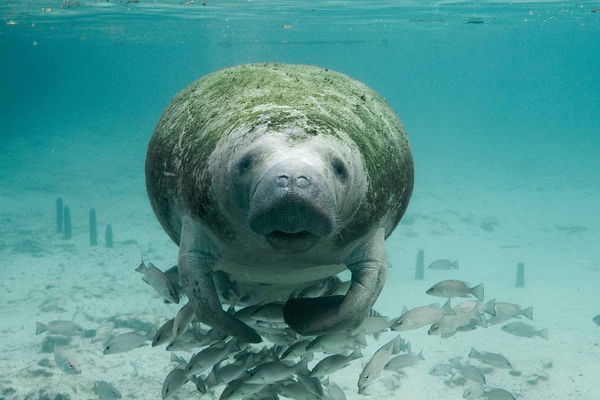
Photo: PublicDomainImages
The manatee, also known as the sea cow, is a herbivorous aquatic mammal found on the coasts of North, Central, and South America, as well as Africa and Australia. These animals are known for their robust and cylindrical body, which can reach a length of up to 4 meters and a weight of more than 600 kilograms.
Manatees are social animals that gather in small herds. They are gentle and peaceful creatures that spend most of the day eating aquatic plants and resting in shallow water. Due to their low metabolic rate, manatees can go long periods of time without food, allowing them to survive in resource-limited habitats.
Manatees are vulnerable to poaching and habitat loss due to coastal development. Currently, they are considered an endangered species, and efforts are underway to protect their populations and habitats around the world.
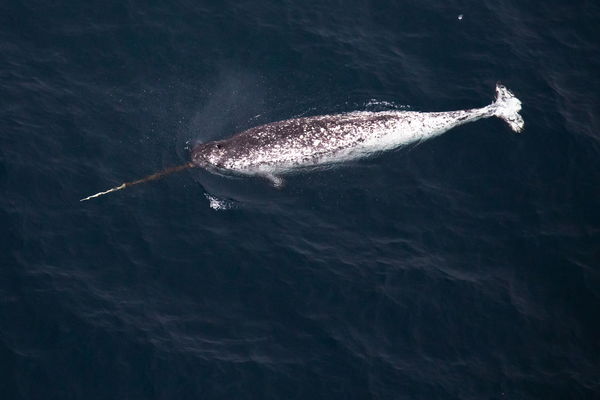
Photo: Wikipedia
The narwhal is a medium-sized toothed whale found in the Arctic waters of Canada, Greenland, Norway, and Russia. They are easily recognizable by their long, spiraled tusk, which is actually a tooth that can grow up to three meters in length in males.
Narwhals have mottled gray or brown skin that can change color with age and the season. They feed on fish, squid, and shrimp, using their long tusks to stun their prey before swallowing it whole.
Despite being hunted for their ivory tusks and meat, the narwhal population is considered stable and not endangered. However, climate change and pollution may pose a threat to their Arctic habitat and food sources.
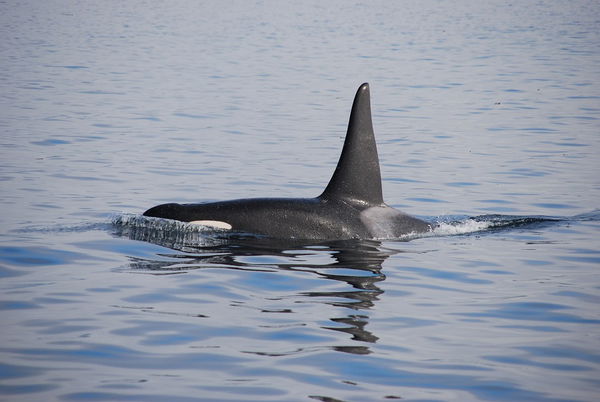
Photo: MrsBrown
The orca, also known as the killer whale, is a highly intelligent and social marine mammal that is found in all of the world's oceans. Orcas have a distinct black and white coloration, with a white belly and black back, and can grow up to 30 feet in length and weigh up to 12,000 pounds.
Orcas are apex predators and feed on a variety of prey including fish, seals, and even other marine mammals. They are known for their sophisticated hunting techniques and complex social behaviors, often traveling in pods of up to 40 individuals.
Unfortunately, orcas are facing a number of threats including pollution, habitat degradation, and hunting. Some populations are also at risk from capture for marine parks and aquariums. Conservation efforts are focused on protecting their habitats, reducing pollution, and ending hunting and captivity.
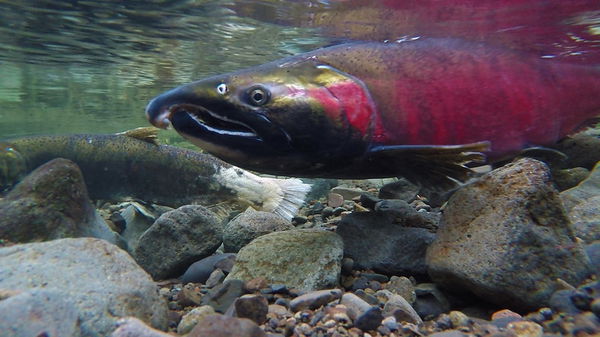
Photo: NPS
Salmon is a freshwater and saltwater fish that belongs to the family Salmonidae and is known for its high-quality meat and ability to swim upstream to spawn. There are several species of salmon, including chinook salmon, coho salmon, pink salmon, sockeye salmon, and chum salmon, found in different parts of the world.
Salmon have a long, slender body, with a small head and a large, sharp mouth full of teeth. Their color varies depending on the species and the stage of their life cycle, from bright silver at sea to dark red as they approach spawning.
Salmon are migratory and spend much of their lives in the ocean, returning to freshwater rivers to spawn. This complex and unique life cycle makes salmon an ecologically and economically important species. In addition to being an important food source for many aquatic animals, it is also a popular sport fish and a major fishery around the world.
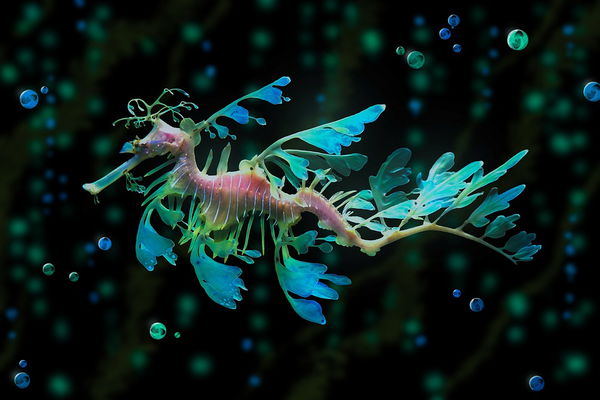
Photo: gene1970
The sea dragon is a type of fish that is closely related to the seahorse. These fascinating creatures are found in the waters around Australia and are known for their intricate, leaf-like appendages that provide camouflage and protection from predators.
Sea dragons are slow-moving and peaceful creatures, and they primarily eat small crustaceans and plankton. They can grow up to 45 cm in length and are often kept in aquariums due to their striking appearance.
There are two species of sea dragons: the common sea dragon and the leafy sea dragon. The leafy sea dragon is the more ornate of the two, with longer and more elaborate appendages.
Despite their striking appearance, sea dragons are threatened by habitat loss and pollution. Conservation efforts are being made to protect these unique creatures and their delicate marine habitats.
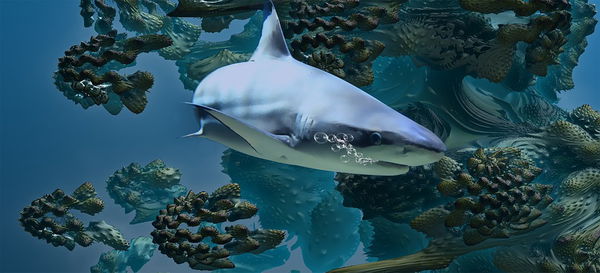
Photo: darksouls1
The shark is a large, predatory fish found in oceans around the world. With their distinctive dorsal fin and pointed snout, sharks are some of the most recognizable creatures in the sea. They have a reputation as fearsome predators, but in reality, most shark species pose little threat to humans.
Sharks are incredibly diverse, with over 500 known species ranging in size from just a few inches to over 40 feet in length. They play a critical role in marine ecosystems, helping to regulate populations of other marine animals and maintaining the balance of ocean food webs.
Despite their importance, many shark populations are in decline due to overfishing and other human activities. Conservation efforts are underway to protect these animals and their habitats, but much more work is needed to ensure their survival for future generations.
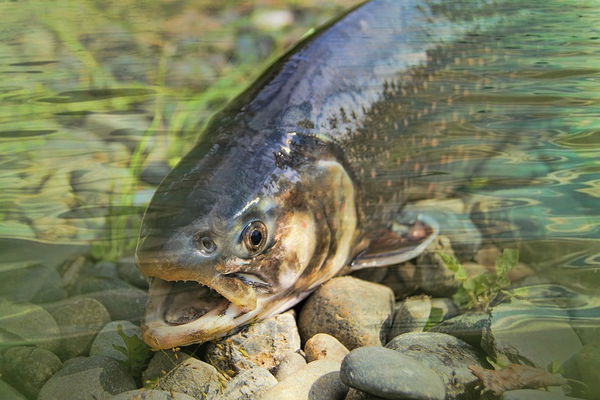
Photo: BarbaraJackson
The trout is a freshwater fish that is commonly found in streams, rivers, and lakes throughout North America, Europe, and Asia. It has a streamlined body with a mottled brown and green coloration that helps it blend in with its surroundings. Trout are known for their beautiful markings, which can vary depending on the species and the environment.
Trout are carnivorous fish that feed on a variety of prey, including insects, crustaceans, and smaller fish. They are popular game fish and are sought after by anglers for their fighting spirit and delicious flavor.
Trout are also important indicators of the health of freshwater ecosystems, as they require clean water and are sensitive to pollution and habitat degradation. As a result, conservation efforts are often focused on protecting trout populations and their habitats.